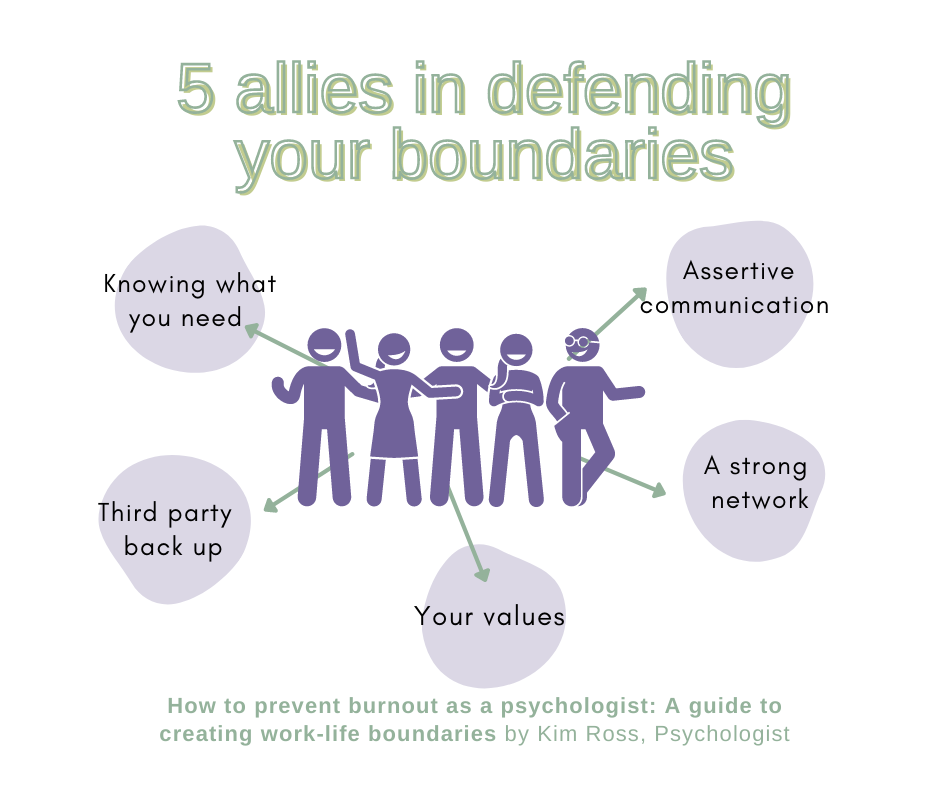|
What’s the longest you have every waited for anything? Life is full of waiting. You wait for concerts, wait for the RACV when your car won’t start, wait for the microwave to heat up your food. And many people seeking mental health support wait on waiting lists. How long should you wait for a mental health appointment? Recently one of my children attended their first ever music concert. Do you remember the first concert you ever attended? I think my first was Australian Crawl, my favourite was U2 at Festival Hall (I think), before they started touring stadiums, which my best girlfriend took me to for my birthday. (We had great seats and it was a magic night. It was amazing.) The tickets to see The Kid Laroi were purchased about six months ago. My child has been counting down the weeks, the days and then the hours. I’ve been listening to The Kid Laroi in the car for at least that long. They were dropped in the city to meet with friends around 5pm, lined up to get into the arena, purchased some merchandise, sat through two support acts, posted lead up photos in a private discord chat (so I didn’t see any, because I’m the mum), sat through a sound check by the act themselves and saw the clock hit start time – 9pm. And sat And waited And then at 9.35pm the show was called off due to The Kid Laroi being ill. All that waiting. I couldn’t do anything about their waiting. but I am trying to do something about people being told they have to wait for a mental health appointment. How long does it take to get an appointment with a psychologist?
I have had clients say they have been told to expect a year’s wait to get into a psychologist. Now this has been the most extreme example, but I regularly receive calls from people saying they’ve been told to ring around as they will need to wait months and months before being able to get help. This is problematic in so many ways. For a start, it’s simply not true. Whilst there are clinicians who are booked out in advance, many more aren’t. And while it’s really hard waiting for an artist who doesn’t show, it’s much harder sitting on a waiting list when you need support. If you've been advised to go on a waiting list, here are four questions to ask. Stop watching parenting shows, reading parenting books and listening to parenting podcasts. It's almost impossible isn't it. All those questions going through your mind. What type of parent am I? Am I good enough?  Are you sick of being stuck on a waiting list? Stressed out not knowing when it will be time for you? Private mental health support can be provided by professionals including psychologists, counsellors, accredited mental health nurses and mental health social workers. The mental health professionals listed below are ready to help you right now. The following list was updated 6th February 2024 It can be difficult to know where to find clinicians who have availability. The Telehealth Availability List can help. The following is a list of clinicians who have immediate availability, using the Telehealth model. These clinicians will not place you on a waiting list. **The information listed has been provided by the psychologist or other mental health practitioner. The author of this article takes no responsibility as to the information provided. All responsibility is yours to explore the information and make your decision as to whether you wish to make a booking or referral. ositive Young Minds
Kim Ross (Psychologist) www.positiveyoungminds.com.au. Phone: 0408533515 Ages: Children and adolescents aged 6-18. Parents. Presentations:
Balanced Mind Body Psychology Renee Johnston (Psychology) https://balancedmindbodypsychology.com.au/ Phone: (07) 5241 4825 Mobile: 0493 509 292 Ages: 18+ Presentations: Broad range of presentations including Anxiety, Autism, ADHD, Grief and Loss, and Perimenopause/Menopause. Funding: Medicare; NDIS (self-managed or plan managed), Private Pay, Health Insurance, Workcover Therapy and Assessments Enhance Life Psychology Nonie Carr (Counselling Psychologist) www.enhancelife.com.au Phone: 0412657234 Ages: Adolescents and Adults Presentations: Anxiety, Trauma, Enhancing performance in the following areas: Sports, Artistic, School and Business. Funding Sources: Include Private Payment, Medicare, CarolanPsych Luke Carolan (Psychologist) www.carolanpsych.au Phone: 0426450902 Ages: 16+ Presentations: Broad range of presentations, particularly anxiety, depression and stress Funding Sources: Medicare, Private Enriching Lives Psychology Carly Dober, Psychologist www.enrichinglivespsychology.com.au Phone: 1300286125 Ages: 10-65+ Presentations: PTDS, depression, anxiety, eating disorders, stress SB Psychology Srolic Barber (Psychologist) www.srolicbarber.com Phone: 0450714262 Ages: Adults Presentations: ADHD - in adults, support and strategies for parents with children with ADHD, Relationship difficulties, Anger issues, Anxiety, OCD and Phobias Shannon Morley (Educational & Developmental Psychologist) www.shannonmorley.com.au Phone: 0409 545 009 Ages: 7-25 yo (children, teens and young adult women) Broad range of presentations including Anxiety, Social/friendships, Transitions, Grief/loss, and School-Related Issues. Communities: Autistic Clients and ADHD Funding: Medicare, NDIS (self-managed) Eve Psychology Evelyn Moser-Burgess (Psychologist) www.evepsychology.com.au Phone: 02 8006 9114 Ages: 18+ Presentation: Anxiety, depression, grief & loss, improving overall wellbeing & goal achievement Funding: Medicare, Private Fee, WorkCover/SIRA Awakening Creative Therapies Mei Sze Goh (Counsellor and Sensorimotor Art Therapist) www.awakeningct.com.au Phone number - 0481 841 118 Ages: Primary and Secondary School age children. Parents Presentation: Childhood Trauma, Exposure to Trauma, Emotional Regulation, Grief and Loss, Relationships (parent child/parent-parent), Anxiety Funding sources: Private health insurance (check individual cover), NDIS self-managed, Private Fee The Nurture Lounge Psychology Clinic Tamika Langdon (Psychologist) www.thenurturelounge.com Phone: 0466 956 448 Ages: 18+ Presentation: Anxiety, Relationships & Intimacy, Self Exploration & Life adjustment, Trauma & Attachment, Chronic Health Conditions Funding: Medicare, Private, NDIS How much does it cost to see a clinician? The cost of appointments will vary. Clinicians on this list run private practices, and are able to set their fees at a price they choose. You do not need a referral to see any of the below clinicians. All clinicians listed below will take private fee paying clients. You may be eligible to claim a rebate through Medicare with an appropriate referral This does not mean you will receive a free service. Reaching out to get help is a difficult process for most people. If you are reaching out and finding it hard to find someone who feels right, please don't give up. FOR URGENT ASSISTANCE And if you need urgent help remember that private mental health practitioners are NOT crisis support services. If you require immediate assistance please contact 24/7 crisis lines such as: - Lifeline (13 11 14) - Beyond Blue Support Service (1300 22 4636) If you require emergency support please dial 000 (within Australia). Kind Regards Kim Ross Psychologist | Positive Young Minds | Walking is Awesome Program. ps. If you are a psychologist or mental health professional I encourage you to share this list information widely. You can register your interest to be included on The Availability List. Creating work-life boundaries is a key to preventing burnout, but how on earth do you keep your work and home separate in the middle of pandemic?
Are you struggling to keep it all together? We are going to be living with the impact of COVID-19 in one form or another for the foreseeable future. Coping with anxiety, psychological distress caused by COVID-19 is significant challenge. And then there are the more practical challenges, like trying to keep work and home separate. Are you working out of your bedroom, or your living room, or side by side with your children at the kitchen table? Do you want to have a sustainable private practice? One way of preventing burnout is through having clear distinctions between home and work, not always easy. Although some seepage from one to the other is normal, you want to avoid a clear take over where you are not at your best in either space. Staying in control of your work-life balance and protecting your time, energy and values is an ongoing process. Whether you are working from home, going into work or using a hybrid model, here are my top 9 strategies to help you create and defend strong workplace boundaries.
1. Identify what matters most to you Finding the confidence to set and protect your boundaries is difficult, particularly for early career psychologists. Certain boundaries in a work setting are clear. These include legal, professional and some ethical boundaries. Other boundaries are more flexible and negotiable. Where you choose to place these boundaries is influenced by your needs, beliefs, resources, and intentions. After you consider legal and ethical requirements that come with being a psychologist, it’s time to consider your values. As a professional you have many decisions, including who you work with, what you charge, when you work, what modality you use, what resources you buy, how you want to work.
If you’re not clear about your boundaries, spending time reflecting on your value is an important step. 2. Identify recurring stressors Make time for regular reflection and bring awareness to your current work situation. How do you feel when you:
The above are some potential areas of recurring stressors that contribute to workplace burnout AND opportunities or threats to your boundaries. Identifying recurring stressors are a good place to stop and think about your boundaries.
Too much incongruence between your values and those of your workplace will create a situation where your boundaries feel under constant attack. 3. Clarify role expectations It’s clear from my conversations with other psychologists that role expectations vary, often dramatically, between workplaces. And the lines between being a subcontractor or employee can be blurred. One clinician stated that at "My other clinic I feel confused by, in terms of am I an employee or a contractor. It feels quite grey, rather than black and white, which leaves me at times confused as to accountability and responsibility and who is managing the risk". Legal advice on whether you are an employee or a subcontractor is recommended. And then this helps the next step, of fully clarifying your contract details. Read your contract and position description. Write down your interpretation of what the contract means. Check your interpretation with your employers understanding. Work through ambiguities. If you are employed, check it with any relevant legislation including workspace, and think about asking a lawyer to check through it as well. Areas to ensure you understand include who is responsible for areas such as
Outside of work, do people in your life understand what you do?
My other clinic I feel confused by, in terms of am I an employee or a contractor. It feels quite grey, rather than black and white, which leaves me at times confused as to accountability and responsibility and who is managing the risk".  4. Set realistic expectations of your time and energy Remember that drive to impress when starting out? The need to do more to quiet you inner Imposter Syndrome? It’s not sustainable. Do you want to be working these hours, taking on these responsibilities in two years’ time? If you don’t, stop setting up unsustainable expectations. Whilst flexible boundaries are important in helping you adjust to the changing demands that are part of managing the ebb and flow that is work-life balance, there comes a tipping point. This occurs when your mindful decision to do more, to bring work home, to talk about work at home, becomes less of a choice and more of a reflection of a loss of control about keeping work-life separate. This seepage is an indicator that you are slipping towards overwhelm and burnout. Think about your current individual situation.
The digital time black hole The time spent reading, organising and responding to emails is estimated to take hours each day; it is a big productivity drain. If you want to check for yourself you can track your time and see for yourself how much time and energy you take with this task. Digital time drains include engaging in tasks such as responding to emails / phones and texts from your workplace and/or clients outside of hours.
If the digital world is overwhelming, a regular digital declutter can help. 5. Make Imposter Syndrome your best business buddy The imposter is that pesky voice in your head that tells you that you aren’t good enough, you don’t know enough, you can’t do that, even when there is plenty of evidence to the contrary When that pesky voice is driving you to do more, to be more, this has a direct impact on your time and energy levels. It can mean putting your hand up to do things that aren’t your responsibility to prove something to yourself and others. It can mean putting in extra hours so you know just what to say and do in the next session with a particular client. You can flip this though. When Imposter Syndrome is reframed to be the quiet voice of questioning and curiosity it can be your best business buddy. Sit down and listen to it and let it guide you into doing a reality check.
As a bonus, the Imposter Syndrome can help test out the congruence of your workplace setting as well as strengthen your interpersonal boundaries. Identifying people you trust can result in lowering your boundaries in some areas and lifting them in others.
6. Own your diary You are a limited resource. No matter how hard you work, there is still only 24 hours in a day. Use your diary as a tool. Mark in your self-care time, and any other time that is important to you. Mark in your holidays. Don't let admin fill your diary out until the end of the year without breaks. Do that client audit and work out how many client hours you are doing a week. Is this sustainable? During times of crisis many psychologists report a need to ‘step up’ and do more for their community. Whilst this may be sustainable in the short term, it can create a chronic lack of control over work-life imbalance leading into burnout.
Whilst flexible boundaries are important in helping you manage the changing demands that are part of the ebb and flow of work-life balance, there comes a tipping point 7. Have clear work policies and procedures Your work setting will have these policies and procedures. Official policies include, but are not limited to, missed appointments, working with separated parents, social media, how you communicate with clients etc. However, there are likely to be gaps. And if you are a solo psychologist, you will be creating your own policies and procedures. Create your policies to not only include necessary legal, professional and ethical obligations, but to also prioritise your self-care. Think about:
Even though you are only one person, having established policies helps you create and maintain work-lifeboundaries. They add clarity for both you and your clients and help you avoid the stress of making decision making on the run). *As a note - people do sell their policies. They take time to develop and it is rude to ask people to share them for free. 8. Establish a work-life transition process Having a mindful routine that helps delineate work from home is helpful in letting your mind know that work is done for the day. Being able to rest from work demands is essential in maintaining control of your work-life balance. Some strategies include:
Do you have a favourite transition strategy? 9. The five allies you need to defend your boundaries After you have set boundaries congruent with your values and designed to honour your time, energy and what matters to you, it’s then up to you to defend them. Broken boundaries can be subtle. Although the impact of stress is often cumulative it can take one thing to make you realise that you have lost that sense of control you once had over your work and home life, leading to exhaustion, resentment and burnout. Many factors go into why your boundaries become porous, why you say 'Yes' instead of 'No'. Interfering factors include Imposter Syndrome, compassion (and lack of self-compassion), overt and covert pressure, workplace culture, financial considerations, lack of clear policy and procedures, guilt, and an inability to prioritise self-care. Your five best allies in defending your boundaries are:
CONCLUSION
Maintaining control of your work-life boundaries to avoid slipping into overwhelm and burnout takes effort, so that you can create either a sustainable career as an employee or a sustainable private practice. The encroaching of work demands into your personal time, energy and what you hold important ranges from very clear breaching through activities such as workplace bullying and exploitation, to more insidious and subtle practices. Without a preventative and proactive self-care approach you are placing yourself at risk. Creating clear boundaries is one of the key self-care strategies. Use the questions and reflections in this article as a guide to help you prevent occupational burnout and improve work-life harmony. OVER TO YOU I’d love to hear your experience of work boundaries and burnout. Is it the digital time suck, the weight of Imposter Syndrome, or the exhaustion of trying to work out the essential from the non essential administration tasks? Or something else? Get the support you need to build a sustainable private practice. Check how well you are coping and sign up for the Private Practice Sustainability Community mailing list for fierce self-care, connection and collaboration opportunities. Chat soon Kim On Saturday afternoon I sat down to watch the North Melbourne versus Brisbane Lions AFL game. As I like to do I wanted to follow SuperCoach* scores on a particular website.
SuperCoach* is a competition where you are given $10,000,000 at the start of the AFL season and choose a team of players who you think are going to play well. Each player is allocated a price, so picking your team is about choosing a balance of great players, good players and the unknown. You are allocated into a league where you compete against others on a head to head basis to win (based on how well your players score). I like playing it during the season, riding the ups and downs and generally berating myself for making poor choices. It’s a constant exercise in frustration tolerance and self-forgiveness. Back to Saturday afternoon. Whilst the game was on I was keeping an eye on how my SuperCoach team was going. The website I was following was being very glitchy, and I was becoming quite frustrated as the scores on the website for the players were not matching. I also could see that some of the players in the team were not showing up on the website, despite numerous attempts at reloading the website. Despite this it was a great game. Toward the end of the game (about two hours later) my son came in from his man cave. He sat down, looked at the game, looked at me and said Mum, you realise this game is a replay. He then pointed out how some of the players were now playing for other teams, one was suspended and not playing in the real life game that I was actually not watching. The penny dropped. It wasn’t the website that was wrong. It was all me. I had been lulled into the fact that it should have been a live game, because the replay had the live label up in the corner. They were the right teams playing, it’s just the game was about three years old. Takeaways? I was not mindfully watching. I was watching for interest in the game, but they are not teams I usually follow. Now admittedly I was also reading and doing a couple of other things at the same time as watching the football, but how did I get it so wrong? Bias, perspective. I saw what I thought I was seeing. I looked at the live label, looked at the teams that were playing and thought I ‘should’ be watching the game. I am currently watching games on the Kayo App which for various reasons I found sometimes difficult to navigate, and thought I had pressed on the button for the current game. So, in my mind I was watching the right game, and everything else went through that lens. The fact that the website figures didn’t match the game, the fact that the website didn’t have all my players on it (because they weren’t actually playing!). This evidence was dismissed because it didn’t match my currently held belief – that I was watching a live game. If I had tuned my attention fully I would have realised what was going on. If I had actually tuned into my common sense I would have realised what was going on. If my mind had been clearer and not full of everything else I was thinking of. Because I rarely sit for two hours and watch a game of football – it is interspersed with other tasks. When it was pointed out to me, it was so obvious. Duh! Isn’t this the way with so much. You see what you expect to see, what you want to see and dismiss evidence to the contrary. In fact you gather evidence (consciously and subconsciously) to support your own belief. This is also known as confirmation bias. In my case, it was that the website had been glitchy and couldn’t be trusted. The power of the mind to convince us of things that just aren’t true! Ok, don’t leave me hanging here. I know I’m not the only one that does things like this. We all do it. When was the last time you fiercely gathered evidence to prove you were right, when you were actually wrong? What to do about it? Situations like this are a great reminder of the importance of living mindfully. To be aware of incongruences and to take the time to explore. They are also a reminder that perhaps it’s time to focus cognitive self-care and nourish your brain. Slowing down a little, taking the time to actively look for a different perspective, realising when your brain is stuck, allowing that other possibilities exist, are all important for your brain health. (If I'd taken the time to go through some basic problem solving steps, I’m sure the brainstorming part would have thrown up the option that I was watching the wrong game.) As is realising your humanity and be able to laugh at the silly things you do from time to time. I had a great laugh at my own expense as I realised what I had done, rather than add to any stress by beating myself up for being so stupid. Ways to Love your Mind You can tune in this week to the Creating Connection podcast where I will be talking about Loving your Mind, and in particular problem solving. But in the meantime you can catch up with my most popular episode this year – 9 keys to successful habit creation. Until next time, take care of yourself. Kim xx |
Categories
All
Disclaimer* These articles are provided by Kim Ross, Psychologist for general information and education . They are not designed to be used for therapy.. If you are experiencing stress please contact your GP or mental health professional.
AuthorKim Ross is an Online Psychologist and Founder of Positive Young Minds and Private Practice Sustainability. |
Working together to strengthen your Calm Dynamic mind and create calm, connection and confidence
I work with people from all backgrounds, beliefs and experiences. I believe you should have the freedom to be yourself and valued for your differences. It's what makes our world go round.
@Kim Ross | ABN 35811757812 | All Rights Reserved | Terms and Conditions | Privacy





 RSS Feed
RSS Feed



